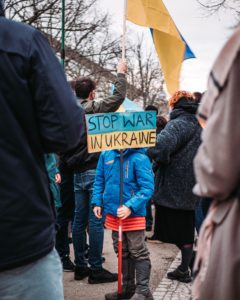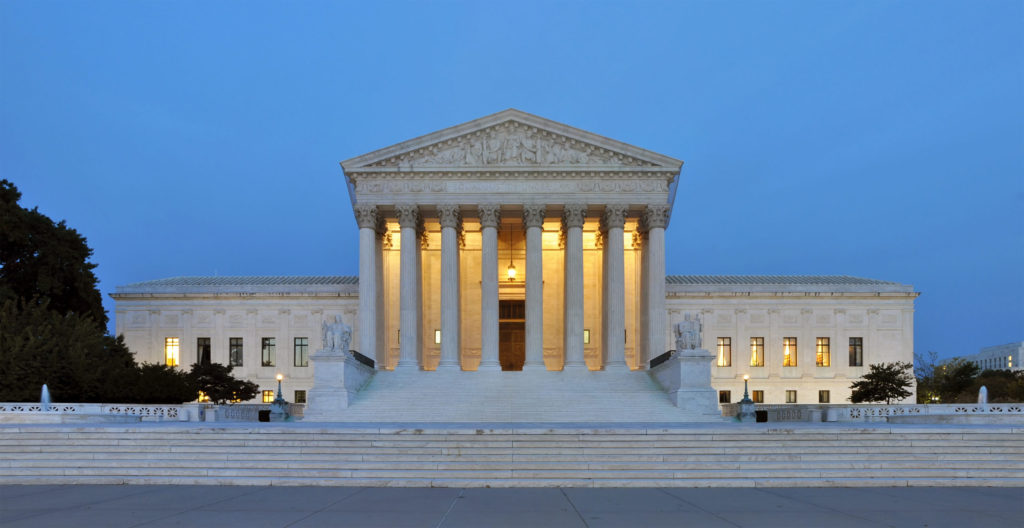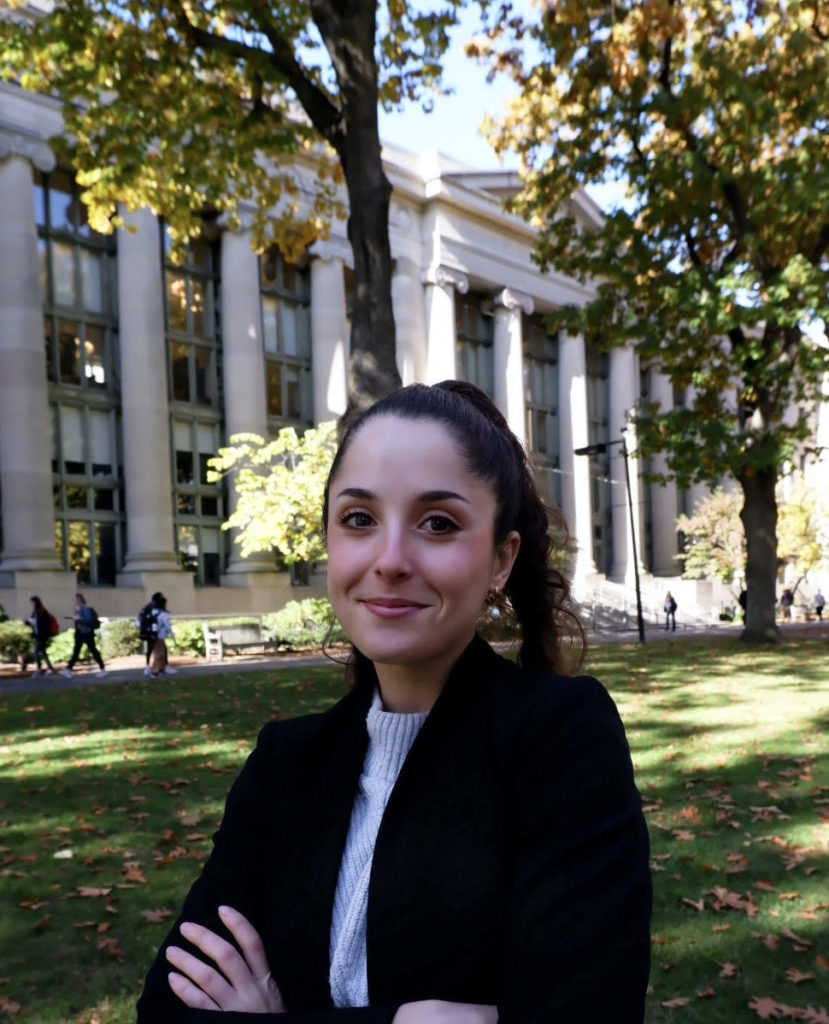by Lorea Mendiguren ’23
With Russia’s invasion of Ukraine and no indication of diplomatic progress since December, two questions are at top of mind: what happens next and what can we do? To understand what is driving the Kremlin’s actions and create space for potential resolutions, we must first identify what the Kremlin actually wants. This piece looks to Russia’s recent history, actions, and statements to analyze the interests underlying President Vladimir Putin’s positions.
Putin’s Position Problem
Putin’s three-principle demands have been clear since the inception of the Ukraine crisis in December:
- Prevent NATO’s expanse. This demand includes assurances that Ukraine will never be permitted to join NATO.
- Cancel weapon deployment near Russian borders.
- Return NATO’s military facilities to positions at the time that the 1997 Russia-NATO Act was signed.

Putin has firmly repeated these demands throughout the crisis. The issue with addressing them, however, is three-fold. First, without flexibility, these hard lines put resolution out of the zone of possible agreement because the first element cannot be met without sacrificing Ukraine’s sovereignty and territorial integrity: an issue that strikes at the heart of the UN Charter and Western values. Second, Putin’s demands are positional in nature. Bargaining over hard positions locks out conversation about legitimate underlying concerns and how those concerns might be addressed in different ways. Finally, because such positional bargaining restricts the opening of space for value-creating option generation and fails to actually resolve the concerns underlying the positions, a long-term agreement is unlikely.
Putin’s positions are well-known—what is critical is understanding the underlying interests at play and what is motivating Putin’s demands. This permits negotiators to make more space for value-creation and potential resolutions, and to identify precisely what concessions may be effective or where there are hard-lines for diplomatic resolution.
Unpacking Putin’s Interests
Russia’s past and current actions demonstrate concern for its military, economic, and political power, which Western expansion is viewed as threatening in three primary ways: military expansion via NATO; economic expansion through trade deals and the growth of the European Union; and political expansion through the influence of democratic governance. Though NATO and the expansion of Western military resources into the East are the primary concerns that Putin is expressing right now, negotiators should remain cognizant of how broader weariness of Western economic and political control are also at play. To discern some of the many military, economic, and political interests at issue, this post will look primarily to Russia’s recent history and to Putin’s actions and language throughout the crisis.
The Traditional Kremlin Approach: Frozen Conflict
Russia’s hard line position on NATO’s expansion, particularly towards Ukraine, is neither surprising nor new. The Kremlin has long viewed the maintenance of a strong “sphere of influence” as essential to its security. In exacting control over bordering countries, the Kremlin has typically chosen the route of creating “frozen” or “managed” conflict in regions (consider Abkhazia and South Ossetia in Georgia, Transnistria in Moldova, or the Donetsk and Luhansk People’s Republics in Ukraine). Rather than fully invading countries like Georgia, Moldova, Ukraine, Armenia, Kyrgyzstan, or Tajikistan, Russia has instead tended to maintain military presence through territorial occupation or support for separatist states, acting as a self-proclaimed “peacekeeper” to push its interests in the regions and frequently imposing puppet leadership. Previously, Russia’s consistent demands from the Minsk II agreement, which call for (among numerous other things) autonomy in the Donetsk and Luhansk regions, suggested a goal of creating a similar frozen conflict in Ukraine rather than conquering the country—but the invasion has raised questions about Putin’s strategy. What does the invasion of Ukraine tell us about how Putin’s interests and goals have shifted?
It helps to first consider what Putin would be “giving up,” strategically, by going beyond frozen conflict. In past actions, frozen conflict can be seen to offer a few “benefits” from Russia’s perspective. First, destabilization maintains a physical buffer between Russian territory and the West. Having such geographic buffers between the Kremlin and the West has been a core security strategy since the beginning of the Iron Curtain era. Second, a destabilized region is susceptible to Russia’s nonmilitary strategies like the Gerasimov doctrine, enabling the Kremlin to foment separatist support and re-establish political influence without a costly takeover. Third, the burden of financial and humanitarian support for a destabilized country is likely to be taken up in large part by the EU and US, as occurred after the 2008 Russo-Georgian conflict.1 As a result, Russia can avoid the high long-term costs that would be needed to stabilize the country after takeover (consider, as a reference, the astronomical estimates for stabilizing the Donbas in 2020). Fourth, destabilization is likely to harm a country’s position as a Western ally in terms of resources, potential contributions, or meeting qualifications for NATO or EU memberships. And finally, frozen conflicts on EU borders “threaten regional stability” and “pose problems for Europe.”2 In short, destabilization rather than full invasion has been sufficient to, at least in the short-term, satisfy the Kremlin’s sphere of influence goals without imposing as many costs.
Regime Change, or Russian Conquest?: Military, Political, and Economic Interests
The invasion raises questions about how far beyond a traditional frozen conflict Russia will go: will it instate a violent regime change with a puppet government, or will it stage a full takeover? Proceeding with a full takeover in Ukraine instead of a frozen conflict or regime change would indicate significant shifts in Russia’s strategic interests: the Kremlin (1) is unwilling to accept short-term guarantees for stalled NATO and Western expansion, (2) is willing to sacrifice having a physical buffer region, and/or (3) sees additional value that overcomes the costs of takeover.
The first point ties to Russian military and political interest in having its “security concerns” (typically focused on NATO’s expansion) taken seriously. If one learns how to negotiate with a counterpart through past interactions, it is important to be cognizant of this interest as a predictive element. Russia’s history indicates that where it feels its security concerns are being ignored and infringed on in diplomatic processes, military aggression has proven an effective—and, per the Kremlin’s current framing, “necessary”—tactic. But what exactly are Russia’s security concerns? Putin’s positions blame the West for encroaching into Russia’s “sphere of influence” via NATO expansion—but a close look at his actions and February 24th address reveal that the central “problem is that in territories adjacent to Russia . . . a hostile ‘anti-Russia’ is taking shape.” Ukrainian President Volodymyr Zelenskyy—who has prioritized relations with the West over those with Russia since his election, has chosen to fight alongside his people to defend Ukraine against Russian forces, and has explicitly appealed to the Russian people in calls for solidarity—is a major obstacle to the Kremlin in efforts to foster pro-Russian sentiment. If the crux interest is ensuring that Ukraine has pro-Russia sentiments, then creating barriers to Ukraine’s NATO membership doesn’t resolve the “anti-Russia problem” or meet Putin’s interests; political reform does. Anti-Russia sentiment is not unique to Ukraine, begging the question of how far the Kremlin’s interest in subduing opposition in non-NATO “sphere-of-influence” countries (like Georgia or Moldova) might push military action. Imposing a full puppet regime—especially in a country with exponentially growing anti-Russia sentiment—is more effective for forcing political allegiance than sowing conflict in separatist regions, but is still a short-term and potentially ineffective method of suppressing pro-Western sentiment. Were Putin to proceed with a full takeover, such action would indicate that a short-term solution is no longer sufficient to meet his interests.
A second factor that would contribute to a takeover choice is that Russia’s security interests in a buffer zone may be outweighed by other considerations. This is a key insight into Putin’s interests; sacrificing a buffer zone would be a massive shift from the Kremlin’s longtime security strategies. Given its history of frozen conflicts that maintain buffers and repeated concerns of NATO being a threat “coming close to our borders,” it is unlikely that Russia has lost interest in maintaining a buffer zone. In cease-fire talks with Ukrainian delegations, the Kremlin has continued to demand neutrality and demilitarization of Ukraine, indicating it still values a gray area. Further, there is no indication that Putin wants more NATO countries bordering Russia. A takeover would increase the number of NATO countries at Russia’s border from five to nine—and this doesn’t include Finland and Georgia, which have expressed renewed interest in joining the Alliance. Those numbers don’t bode well for Putin’s professed purpose of the invasion: so “that we can’t be threatened by an anti-Russia right on our borders.” Maintaining a buffer zone thus still appears to be at the core of the Kremlin’s security interests, and a full takeover would not be consistent with this.
If Ukraine were to see a full takeover, the Kremlin’s interests around buffer zones will therefore need to have changed significantly. One possibility is that interests in buffer zones would be reduced but still present, which may be satisfied with a smaller buffer zone within its own border (such as that seen between the West and East Berlin Wall). Another concerning possibility is a shift in interests from territorial protection to territorial expansion. This ties back to the third point delineated above: that the Kremlin sees a value in takeover that would overcome its substantial costs. Some analysts have cited Putin’s actions as reflecting nostalgia for the territorial integrity of the USSR, raising concerns that Russia would push its territory to invade NATO territories. Importantly, this possibility must be squared with security concerns and economic interests (described in further detail below): even with Russia’s threat of nuclear weapons, going up against NATO’s full military force is costly and extremely risky.
Assessing each of these strategic concerns and their implications on Russia’s interests permits a clearer understanding of which outcome—a regime change or a full takeover—is more likely to be intended and thus what Western strategic approaches might be most effective. Though Russia’s interests in re-asserting political power and buffer protections in Ukraine may potentially be met through either method, both carry risks, interest and efficiency tradeoffs, and high costs. A regime change must face a highly anti-Russia populace and major costs in rebuilding after attacks. A full takeover would face similar oppositional sentiments, costs, and the added threat of new bordering NATO countries, which now have added Western military supports as a result of the conflict. The last weeks have demonstrated that the West should be prepared for anything—but a careful analysis of the potential consequences and Russia’s interests and demands indicate that a regime change, not a full takeover, is the likely intended outcome.
Broader Economic Interests
Economic Relationships in the “Sphere of Influence”
Russia has long been concerned about Western Europe’s expansion of economic influence to the east. A flashpoint occurred when Ukraine and Georgia entered into a Deep and Comprehensive Free Trade Area agreement, which commits members to aligning several key trade and regulatory areas with EU legislation as part of the Eastern Partnership—an agreement aimed at “reinforc[ing] the political association and integration” between the EU and eastern states. Russia’s efforts to stop Ukraine’s agreement and punish its relationship with the EU have resulted in a hard impact on the Ukrainian economy, backfiring into a harder turn to EU trade and investment opportunities. While Russia formerly received more of Ukraine’s exports than the EU, by 2018, Russia’s share had fallen to 7.7% while the EU’s had nearly doubled to 42.6%. The effects of EU trade expansion are not isolated to Ukraine, either; overall trade between the EU and the South Caucasus states has grown 22% in the last decade, and the EU has become Ukraine, Georgia, and Azerbaijan’s top trading partner. With its goal of eradicating anti-Russia sentiments, the Kremlin has a strong interest in improving its economic ties to its desired “sphere-of-influence” countries (and harming their growing relationship with the EU).
Russia’s Economic Power
Russia’s economic concerns go beyond its relationship with surrounding countries. The nation’s most significant economic interests lie in its fuel and energy export markets (primarily crude oil and natural gas), which make up over 60% of its total export revenues. Revenues from these exports are estimated to account for about 40% of Russia’s federal budget. Over 25% of Russia’s crude oil goes to the EU—with another another 31% going to China—and its natural gas exports are even more reliant on Europe, with 40% going to the EU. Given their significant role in Russia’s revenue streams, fuel and energy exports are a pivotal part of Russia’s economic interests; the Kremlin would be hard-hit by sanctions in this sector.
It is unclear how Russia weighs its economic concerns compared to its military and political interests. Indeed, after the West definitively ruled out sending troops to Ukraine and instead threatened major economic sanctions, the Kremlin was willing to gamble on the severity of those sanctions by invading Ukraine. Relying on its economic power in the energy market, its concomitant grip on the EU, and the steps it has taken to protect the Russian economy from sanctions, it appears that Russia has been willing to absorb anticipated economic risks. This indicates that it has prioritized its military interests over its economic ones.
However, vulnerabilities in the Russian economy indicate that sanctions could prove quite harmful, and the Kremlin’s response suggests that economic interests are still very much at play. Russia’s economy is relatively weak; its GDP of $1.5 trillion is comparable to Italy’s of $1.9 trillion, and is dwarfed when compared to the EU’s $15.3 trillion GDP. And despite efforts to reduce their impacts, sanctions have still affected the Russian economy. Repercussions imposed after the annexation of Crimea stagnated economic growth (0.3% per year compared to the global average of 2.3%) and saw an average decline in fixed investments of about 0.5% per year. And, though Russia’s foreign reserves have grown significantly over the last seven years and have decreased dollar holdings, Western sanctions against Russia’s Central Bank still threaten to freeze its over $630 billion in reserves. The last weeks have seen the ruble plummet and interest rates rise rapidly. Additionally, Canada’s cutting out of Russia and Belarus from World Trade Organization Most-Favored-Nation status on tariff treatment will have major impacts on Russian trade, resulting in a 35% tariff rate on virtually all imports to the country. If others make the same move—like the EU, Russia’s biggest trade partner, is considering doing—this could seriously exacerbate economic consequences for the Kremlin.
There has still been some skepticism around how exactly sanctions will impact Russia, particularly with regard to turning to China. Still, the sanctions will hurt, and though Putin has tried to dispel any economic concerns, it is clear that he is rattled by the sanctions—going so far as to describe them as akin to a declaration of war and put Russian nuclear forces on high alert. As a result, Russia may be re-evaluating its economic priorities—signaling potential room for value creation in diplomatic talks.
Regional Political Interests
Pro-Western sympathy and calls for political reform in places that Putin wants under Russian influence are point of major concern. The Kremlin also has political interests in building relationships with non-Western allies beyond Belarus, especially China—this portion of the article, however, will focus on regional political interests. Putin’s efforts to secure his regime and political authority indicate two key interests within the desired “sphere of influence”: (1) maintaining control within Russia and (2) weakening the influence of Western nations and their ability to extend political influence.
Internal Stability: Control and Agreement within Russia
The Kremlin has a long-term central interest in maintaining control over its people and political narratives. The current crisis is no exception, with Russian media seeing plentiful misinformation and propaganda about the invasion of Ukraine. These efforts appear to be relatively successful; a mid-February Levada Center poll found that 60% of respondents considered the United States and NATO countries instigators of the escalation (a 10% increase from November 2021). Still, there is a growing divide in the public perception. Numerous street protests; high-profile condemnations of the invasion from celebrities, former Prime Minister Mikhail Kasyanov, and Kremlin-feared Russian opposition politician Alexei Navalny; and petitions (including one that has gathered over 1.5 million signatures) are calling for an end to the invasion. Russian television and media sites have also featured calls to stop the war, resulting from cyber attacks by activist collective Anonymous and journalists’ efforts. Though the effect of sanctions on the general public’s day-to-day lives is unclear, large cities have seen long queues to banks, frustrating credit service suspension, and travel both inside and outside of Russia impacted. The concern with domestic opposition to the invasion is clear. In response, the Kremlin has arrested journalists and thousands of protesters and has taken steps to reduce access to information. The Kremlin has threatened to block media websites that fail to comply with requirements to publish only official government reports about the ‘special military operation’, and the lower house of Russian Parliament has approved a law penalizing ‘misinformation’ about Ukraine—read as anyone challenging the ‘official’ account of the fighting in Ukraine— with up to 15 years in prison. With internal stability and complacency playing a major part in domestic stability interests, increases in public opposition could raise serious concerns for the Kremlin.
The Russian Orthodox Church is also an important source of power for the Kremlin. Orthodox faith has deep-rooted influence among Russian-speaking populations, with a 2017 poll finding that over 70% of people in Moldova, Greece, Armenia, Georgia, Serbia, Romania, Bulgaria, Belarus, and Ukraine identifying of Orthodox (though there is also some rifting, with a smaller denomination in Ukraine looking to independent Orthodox Churches in Ukraine). The Orthodox Church has been a key part of Putin’s influence over the last decade, in large part due to his close relationship with Patriarch of the Russian Orthodox Church, Kirill, who has long expressed support for Putin. Indeed, the Church forms part of the image Putin tries to portray as a leader defending conservative Christian values against the West, and protecting Orthodox Christians been part of Putin’s narrative justifying the invasion of Ukraine (with support from Kirill). But support from leaders and affiliates of the Church has begun to waver—in large scores in Ukraine and abroad (including from Ecumenical Patriarch Bartholomew I) and in growing scores within Russia itself. Preserving a strong relationship with the Church is an important part of Putin’s interest in maintaining influence over Russian and “sphere-of-influence” populations.
Another set of key players in Russia’s internal support and stability are the Russian elite. Some experts observe that sanctions can and have impaired relationships within the Putin regime, fostering a divide between two elite groups: those who profit from Western investment (oligarchs) and securocrats who profit from the domestic budget or wield state power (siloviki). While power of the siloviki over other elites appears to have grown stronger since the Crimean annexation, oligarchs have been harder-hit and have begun to cautiously speak out against the invasion of Ukraine (indicating some success with Western sanctions against oligarchs). The Kremlin’s relationships with the elite are a valuable part of its domestic interests and are important in maintaining Putin’s support circle. But if Russian living standards continue to decline and other domestic problems remain unresolved, some hypothesize that Putin could lose elite support. This is especially possible given that elite support for the unification of Russia and Ukraine has consistently declined since 1995—with only 5% of Survey of Russian Elites respondents supporting unification in 2020—and the appearance that elites have been somewhat sidelined from Putin’s plans in Ukraine. Targeting the strong ties between the siloviki and the Kremlin and further leveraging oligarch vulnerabilities to sanctions may thus be effective in jeopardizing internal stability interests.
Weakening Western Influence
Russia has long endeavored to weaken Western political influence. Indeed, the Alliance for Securing Democracy of the German Marshall Fund has detected 435 instances of Russian attempts to undermine democracy in other countries (primarily in Europe and the West) since 2000 through misinformation campaigns, cyber operations, malign finance, civil society subversion, and economic coercion. Such encroachments are not limited to elections, but extend to democratic decision-making or demonstrations across a range of issues. Russia’s efforts to silence opposition and to puppet political systems are particularly prominent in countries Russia views to be within its “sphere of influence.” Consider Russia’s interference in response to the 2013 Maidan protests, the security and propaganda assistance extended to Belarusian president Alexander Lukashenko when he faced protests after his contended election, or disinformation efforts in Georgia’s 2019 election. Throughout this crisis, the Kremlin’s propagandistic messaging to the Russian people villainizing Ukraine and the West and blaming them for the escalation reflects efforts to emphasize Western evil and Russian heroism.
For Putin, eradicating anti-Russia sentiment goes hand-in-hand with eradicating pro-Western sympathies. Assessing the crisis with a lens of weakening Western influence adds dimension to Putin’s demands. Putin seeks to close off options, period, for “sphere-of-influence” countries to build additional alliances in the West; particularly ones that would enable it to counter Russia’s coercive power.
Conclusion
A careful assessment of Russia’s interests is critical because it allows for additional options to be created within the potential outcomes of regime change or takeover—especially since NATO has refused to send troops to Ukraine and military options are thus limited. Understanding Putin’s security, economic, and political interests and the ways in which they inform each other is critical for finding more opportunities for reasonable concessions—as well as more places where concessions may prove more harmful in the long term. These interests also play a major role in understanding what strategies are most likely to disincentivize or challenge Russia’s continuing invasion in Ukraine.
With limited Western military response, Russian aggression intensifying, and negotiations at a standstill, value creation in diplomatic talks and strategic nonmilitary responses is more important than ever.
[1] Richard G. Whitman & Stefan Wolff, The EU as a Conflict Manager? The Case of Georgia and Its Implications, 86 International Affairs, 87 (2010).
[2] Id.









